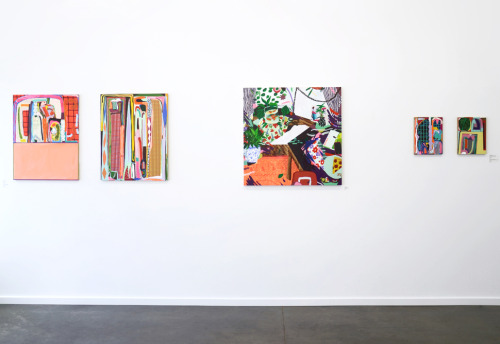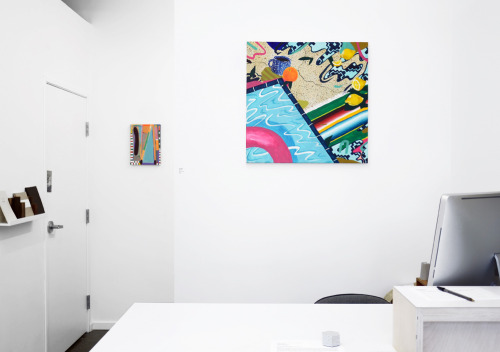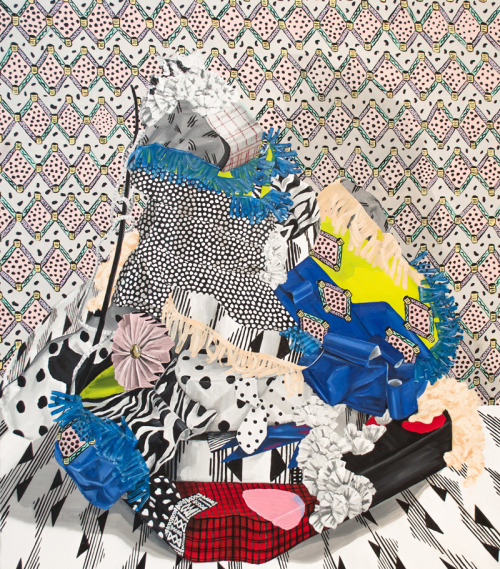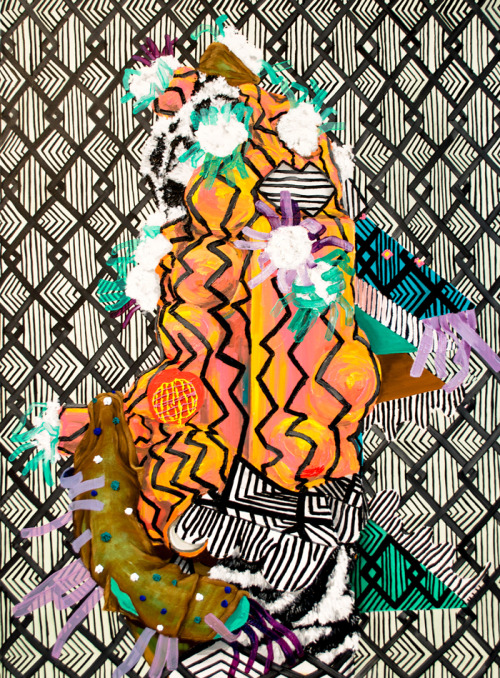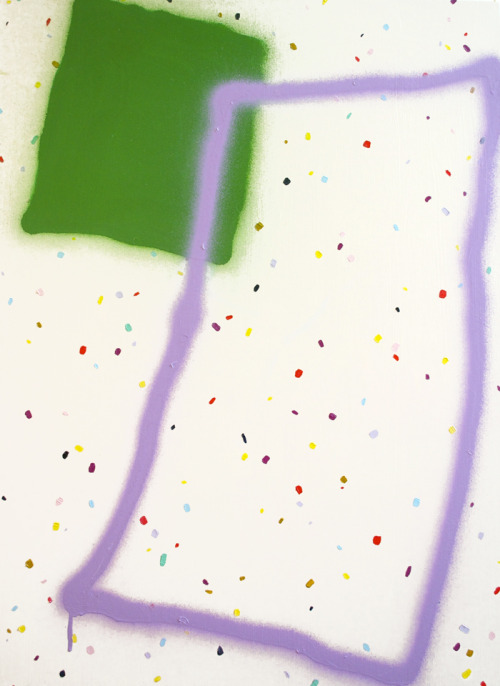GLL: Can you tell us more about your interactions with the other artists? Did you find some kindred spirits and what was their work like?
SM: Interaction between artists was happening all the time, whether it was conversations at dinner, talking on the library porch, or impromptu studio visits with one another. We also had other more structured time to talk to each other about our work. I mentioned that we had weekly individual studio visits with resident faculty, and we also met with one of the visiting artists for an individual studio visit. Twice during the residency, at week four and at the end of the summer, there were open studio days to walk around campus and see everyone’s work. Halfway through the summer the painters began a Painting Happy Hour as a good excuse to have a cocktail before dinner and exchange group studio visits. We also began another small informal group that exchanged studio visits centered on our shared interest in fashion and the various ways fashion informed our work. Resident faculty Sarah Oppenheimer’s partner Noga Shalev is a clothing designer, so we had the opportunity to see her studio as well as take part in a fashion shoot with some of her newest designs.
There was an incredible diversity of practices among the residents. During the first week we had a marathon slide show where all 65 participants presented their work. I remember sitting in the Fresco Barn, being so blown away during those slide talks at the talent and intelligence gathered together in one place for nine weeks. That being said, there were several artists that I shared particular affinities with for various reasons, three being Sophie Grant, Linnea Rygaard, and Anna Queen.
Sophie Grant recently finished her MFA at Hunter and lives in Brooklyn, New York. Sophie is an abstract painter, and although her work is different from mine I found we shared a lot in common dealing with creating tension between illusion and collage. Sophie is really masterful at playing with and confusing what parts of the painting are painted, what parts are collage, what is cut out or what is behind versus in front. We shared an interest in color and pushing our palettes to be a little bit “wrong” in some way. We really enjoyed sharing thoughts on how we thought about materiality of paint and application of paint. Sophie is currently working with pours and staining and creating shimmery surfaces. She was also experimenting with creating shaped canvases while at Skowhegan, and taking the canvas off of stretcher bars completely to explore hanging and draping the canvas in different ways.
Linnea Rygaard is from Sweden, and makes larger than life abstract paintings heavily influenced by architectural spaces. Her paintings work with perspective and pushing perspective in ways that created at times a believable, but also impossible space. Her work also plays with design and pattern, although in different ways than I work with pattern, and the paintings oscillate between tight, rigid, almost trompe l’oeil areas to really loose, luscious, painterly applications of paint.
Anna Queen graduated from MICA and currently lives in Maine. Anna’s work incorporates found materials; mostly building materials found in hardware stores, as well as ceramics and fabricated pieces. I was particularly drawn to the way Anna utilized light, reflections, and transparency, and combinations of colors in her work. She played with arrangements of materials as well as expectations of materials and gravity, like making cast concrete appear as if it were crinkled paper.
GLL: Did the experience change the way you think about community and studio practice?
SM: The support and encouragement at Skowhegan really reinvigorated my belief in the importance of community among artists. There is a built in community in grad school that is really comfortable, but Skowhegan felt like a call to action for getting outside of that school group and finding ways to build community at home in Eugene and Portland. It definitely poses a question for myself about how I can reach out and develop relationships around me, what are other ways to interact besides gallery openings and artist talks, and how can I be more generous with my time and energy?
Also, since we’re talking about community, please take a moment to check out www.skow2015forlife.com. Upon returning home after the residency, Jeff Prokash, a fellow participant, learned that during his absence his brother, Tim, was diagnosed with stage 4 cancer. Participants, faculty, and staff have donated work on this site that is available for purchase to help the Prokash family and Tim’s treatment.











